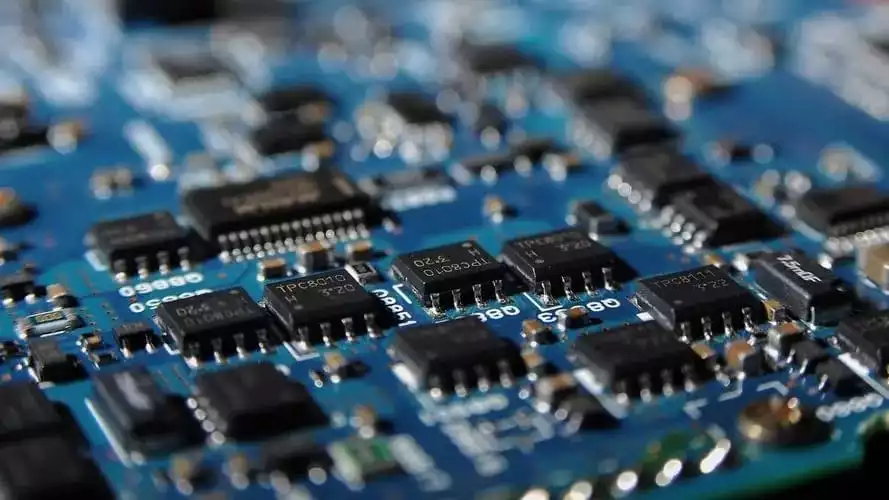ISLAMABAD, August 16 (ABC): The socio-economy and geopolitics of the Indo-Pacific region has entered into a new “blind alley” of another trade war in terms of semiconductor/CHIPs, says a report published by Gwadar Pro on Tuesday.
Most recently, the US government has announced to form a BIG/CHIP 4 Alliance (US, Japan, South Korea and Taiwan) to contain the Chinese semiconductor capacity and market share, the report added quoting an article contributed by Dr. Mehmood Ul Hassan Khan, Executive Director of the Center for South Asia & International Studies (CSAIS).
It was stated that in the near past, the world experienced a shortage of chips during the Covid-19 pandemic, which disrupted the production of multiple products and sparked a worldwide debate about chip production.
In this connection, the US President Joe Biden recently signed the Chips and Science Act of worth US$52 billion and sets aside tens of billions of dollars to encourage companies to set up manufacturing and design facilities in the US.
The Act has “violated” basic market rules by using the government’s power to change the global labor distribution pattern in the semiconductor industry, which has been formed naturally over the years according to market characteristics and resources.
China and some other countries are good at mass production because these countries have advantages over the US in terms of labor costs. Therefore, a short-term subsidy aimed at moving all the sectors of the semiconductor to the US will only add to its manufacturing cost, making the products less competitive in the international market.
On the other hand, if companies decide to accept US subsidies and give up chip investment in Chinese mainland, that almost means a spontaneous abandonment of the huge Chinese market, which not only helps produce a large amount of chips at a relatively low cost for them, but buys many semiconductor products from them. Thus, in the long run, the global chip giants may be at a loss.
Shares of many global chip makers plunged, even the US companies are facing the heat. US chip stocks’ plunged also to some extent, reflecting the concerns of semiconductor enterprises as they are forced to choose sides, restructure their future investment and layout following passage of the bill.
Conversely, several leading semiconductor companies in China, including the largest producer and major component suppliers, reported strong results in the first half of 2022, despite the US’ relentless crackdown against China’s chip industry.
China’s largest chipmaker, Semiconductor Manufacturing International Corp (SMIC), Yangzhou Yangjie Electronic Technology Co, Amlogic (Shanghai) Co and last but not least, Sino Wealth Electronic shared substantial increase in their overall profitability and market share, which is a very healthy sign for the Chinese domestic semiconductor industries.
Now is the age of globalization, in which all commercial decisions are made on the basis of “supply-demand”, availability of cheap labour, expected business expenses and cost of massive production, but somehow, the successive government of the US has been “cliff-hanging’ with the self-defined doctrine of economic nationalism and protectionism. Due to which, in many cases, the concept and model of free market has been “compressed” and “compromised” in the world.
The government subsidies have “killing instincts” for the globalized economy, economic sustainability, free & fair play, supply chains, international payment system and especially free flow of funds and foreign direct investments in the world.
Thus, the US CHIPs Act is “anti-international economy” and its subsidies are anti-standardization of the modern industrial world.
Taiwan Semiconductor Manufacturing Co, or TSMC, the world’s largest chip foundry, started building a $12 billion complex in Arizona last year. Samsung Electronics is working on a $17 billion factory in Texas.
However, in the past, the success of Silicon Valley depended on venture capital investments, the very high-risk, high-reward investments that fueled the emergence and growth of the semiconductor industry. Nevertheless, when they stopped their investments and preferred to develop overseas markets such as Japan, South Korea and Taiwan and later on the Chinese mainland, the US quite naturally lost its edge in manufacturing semiconductor chips which is now at the lowest ebbs.
It seems that now throwing money at the semiconductor industry to make up for the lost decades may not succeed, because the lost decades mean that the US no longer has the necessary people with the skills to build and run a state of the art fab.
The Chinese “financial gurus” and banking experts should consider alternative means to evade the CHIPS Act’s clauses by adopting special commercial structures such as “sovereign wealth funds’, trust or other methods, which will help them mitigate its negative impacts.
Public-private partnership in the R & D of national industries of semiconductors and technological cooperation with ASEAN countries and government incentives may be good countermeasures of China to mitigate spillover repercussions of the US CHIPS & Science Act.
Strategic expansion of the “BRICS” and start of “CHIP BRI Initiative” may be sensible strategic measures to mitigate negative impacts of the US Chip Act.
Information in this article comes from third party providers. This website does not provide explicit or implied warranty for such information and is not liable for any losses directly or indirectly caused by using such information, the article added.

